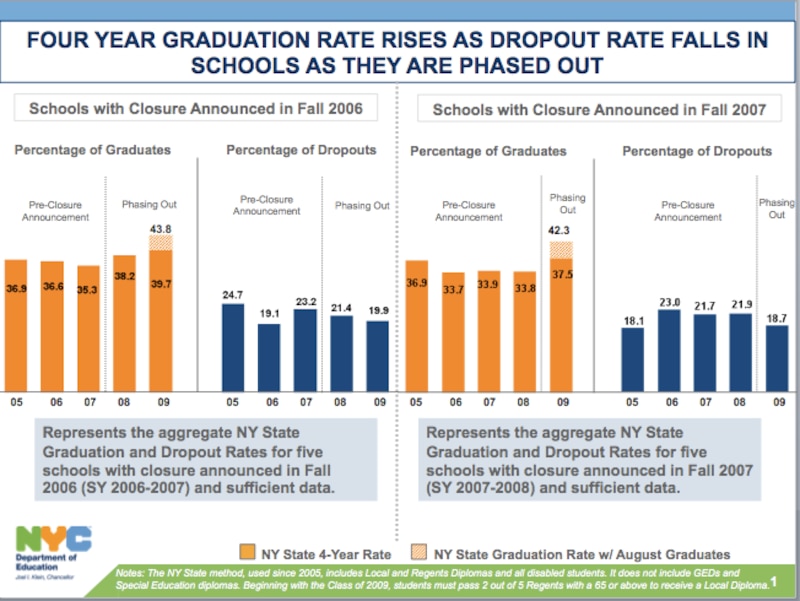Department of Education officials frequently claim that students who attend schools that are phasing out benefit from being there. As school officials told City Council members last week, students get more attention and a stronger push toward grad as the schools get smaller.
Today, two posts in the GothamSchools Community section challenge the city’s story. In the first (reposted from the blog EdVox), Melissa Kissoon describes what happened to her school after it started phasing out. She writes:
My first two years of high school at Lane were great. There were clubs and extra credit activities to help students get ahead or to help struggling students pass. … Now all the great teachers we once loved have either switched to the other schools in the building or have just gone to another school completely. Now there is no money for the last year of students within my school. For example, there is no longer a library!
A second Community piece, by Christine Rowland, looks at graduation and dropout rates at the four schools where she has worked — two of which closed in 2006 and two of which are up for closure this year. At last week’s City Council hearing, the department presented data that showed that both graduation rates and dropout rates climbed at schools in the process of phasing out.
Rowland dug into the DOE’s data archives and found that that pattern hasn’t always been true. During the final years of Theodore Roosevelt High School and William Taft High School, the dropout rate spiked without an accompanying climb in the graduation rate. She’s worried the same outcome awaits the current students at John F. Kennedy High School and Columbus High School, where she works.
The discrepancy between Rowland’s findings and the city’s could come from Rowland’s small sample size of four schools. Or it could reflect a boost in performance in schools that phased out after 2006. Two years ago, I wrote about the city’s phaseout guru, who traveled from school to school helping principals focus attention on students on the cusp of graduation. (That position no longer exists.) A second DOE slide suggests graduation rate spikes in schools whose closure was announced in 2006 and 2007:

